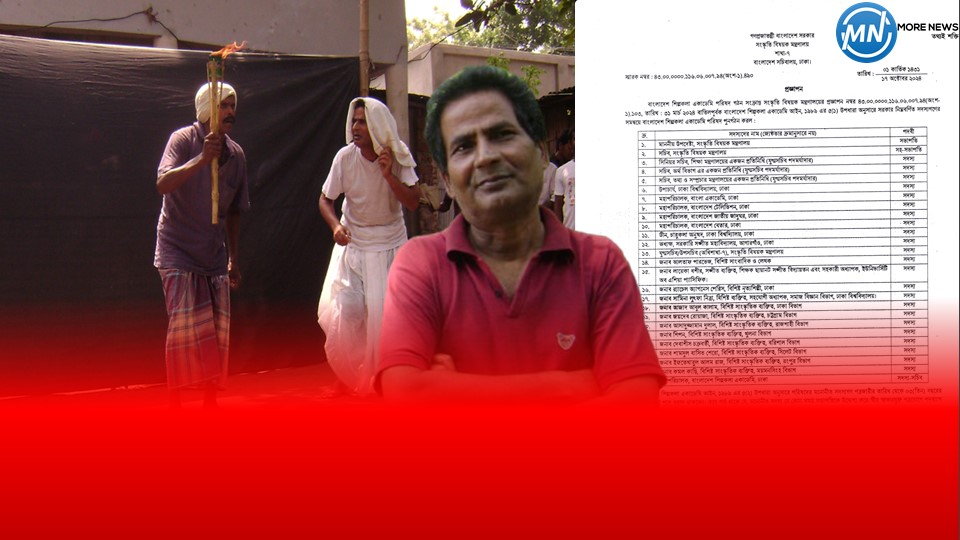Chalanbil's 'Palla Festival': The thrill of fishing by lighting it up in the dark


Published: 02:20 27 October 2025
Chalanbil, the largest lake in Bangladesh, is not only appreciated for its enchanting natural beauty, but also as a shining symbol of the tradition and culture of the local people. A series of ancient festivals have developed around this lake. One of these is the 'Palla Festival', which is known to the locals as an exciting night fishing festival.
When the water in the lake slowly starts to recede at the end of the monsoon, amateur and professional fishermen of the area go out in groups to fish in the dark of night. They carry powerful flashlights or electric lights in their hands—by which they search for fish in the water of the lake.
Fish have a natural attraction to light. As a result, when the light is shone, the fish come closer or remain still. At that moment, the fishermen quickly cast their special net, which is called 'Palla' or 'Chaita'. It instantly catches native fish such as shoal, takii, shing, magur, etc.
In the silence of the night, the flashing lights, the sound of water, and the cries of hunters create a strange and exciting atmosphere. For hunters, it is not just a fishing experience, but a kind of joyous festival.
For the locals, the ‘Palla Festival’ is not just fishing, but an occasion for social communication and friendship. While searching for fish in groups, they talk to each other, laugh and joke, turning the night into a festival.
Apart from this, there is another traditional festival in the Chalanbil area—‘Baut Festival’. In this, fish are caught in groups using nets, poles, ropes, etc. instead of pallas. Both festivals have become part of the tradition for the people of Natore, Sirajganj, and Pabna districts, where chalanbils are prevalent.
Just as many traditions are being lost in the waves of technology and modernity, the spirit of the ‘Palla Festival’ is also dying out a bit. Still, the locals organize this festival every year to preserve their cultural and joyous legacy.
Chalanbil's 'Palla Festival' still carries a vibrant image of rural life today—where joy, tradition, and nature blend together to form one.
Most Readed - Literature & Culture
- JB's law department student Mehnaz not included in BJS gazette
- Farewell ceremony of 5th grade students of The Child Learning Homes held in Durgapur
- 56 BGB seizes four ownerless Indian cows at Boda border
- BGB seizes huge quantity of Indian liquor in night operation
- Miscreants attack on rice sheaf banner in Narail - Concern in Hindu-dominated areas
- Fraud in the name of unregistered cooperative in Narail - Allegations against Astha Sangstha
- Gazipur teenager Selim suffers from terminal cancer, desperate plea for help
- EB Chhatra Dal's prayer mahfil for the health of Khaleda Zia
- EB Reform Movement's sit-in program on two demands
- Savar Disabled Woman Hanufa Murder Case: Property Misappropriation Was the Main Motive, Newly Revealed
- The Iranian public has mixed reactions to the death of President Ibrahim Raisi
- Iran's President Ebrahim Raisi and Foreign Minister died in the helicopter crash
- Ibrahim Raisi Killed: Mere Accident or Premeditated Murder?
- in the memory of Ibrahim Raisi, mourning in the country
- 3 KNF members were killed in a joint operation led by the army in Bandarban
- Today is Sheikh Hasina's 44th Homecoming Day
- Urinary Bladder Cancer: Symptoms to watch out for
- Kangana will say goodbye to the world of cinema forever
- High blood pressure 'silent killer' for kidneys
- France supports arrest warrant application against Netanyahu-Hania




